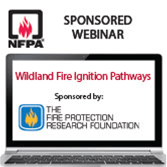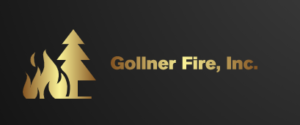New WUI Ignition Pathways Report and Webinar
A new report “Pathways for Building Fire Spread at the Wildland Urban Interface” was recently published to the NFPA Fire Protection Research Foundation Website, which also sponsored the project. A webinar was also hosted by the NFPA on Tues., April 21, 2015, 12:30-2:00PM (EDT) covering highlights from the report.
also hosted by the NFPA on Tues., April 21, 2015, 12:30-2:00PM (EDT) covering highlights from the report.
You can view the slides from the presentation here: http://www.slideshare.net/mgollner/pathways-to-building-fire-spread-in-the-wildlandurban-interface
Fire Protection Research Foundation report: “Pathways for Building Fire Spread at the Wildland Urban Interface” (PDF, 7 MB)
Authors: Michael J. Gollner, Raquel Hakes, Sara Canton and Kyle Kohler, University of Maryland
Date of issue: March 2015
Foreword
Fires in the WUI communities are a rapidly growing problem in the US. The last 15 years contains six of this century’s top ten most damaging U.S. single fire events; all of these events occurred in WUI communities. Over 46 million homes in 70,000 communities are at risk of WUI fires (Bailey, 2013). Since 2000, over 38,000 homes have been lost to WUI fires in the U.S.
There are many potential pathways for wildland fires to ignite buildings within the WUI. These pathways (including both fire and ember exposure) depend on the characteristics of the wildland (e.g., fuels, terrain, weather, etc.), the characteristics of the community (e.g., construction materials, building designs, housing density, landscaping, etc.), and the characteristics of the interface (e.g., separation distance, physical barriers, extent of perimeter, etc.).
NFPA Standard 1144, Standard for Reducing Structure Ignition Hazards from Wildland Fire, and NFPA 1141, Standard for Fire Protection Infrastructure for Land Development in Wildland, Rural, and Suburban Areas, address hazards to structures at the wildland interface and appropriate mitigation measures (NFPA, 2013; 2012). Understanding the pathways above and their contribution to fire risk will help inform future editions of these NFPA standards.
The goal of this project is to identify pathways for fire spread at the wildland urban interface and identify gaps in information to inform prevention and protection strategies. The Research Foundation expresses gratitude to the report author Michael Gollner and his research team at the University of Maryland. Likewise, appreciation is expressed to the Project Technical Panelists and all others who contributed to this research effort for their on-going guidance. Special thanks are expressed to the National Fire Protection Association (NFPA) for providing the funding for this project.
default

